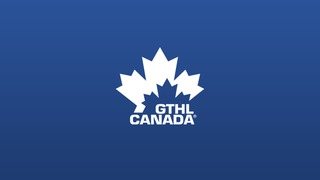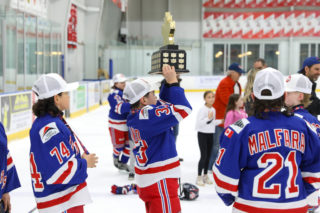In early February, Treva Thompson’s 14-year-old son got tangled up with a teammate at practice and hit his head on the ice. Thompson’s husband John, the assistant coach, saw the collision and immediately escorted his son off the ice. It wasn’t until John completed a round of questioning and received a vote of confidence from his son that he let him return to practice.
When Thompson’s son returned home, he realized something wasn’t right. He felt more fatigued than normal. The light and noise surrounding him made for an extremely uncomfortable environment. Treva noticed a foggy sense of confusion in her son, but to her it was crystal clear: he had suffered a concussion. Quickly, she looked to the GTHL Concussion Policy for guidance.
Thompson spoke of the positive experience she had bringing the policy to medical professionals in the community. “The general physician our son initially saw, and our usual family physician did thorough assessments and follow-up, and both were very impressed by the GTHL Concussion Policy and it’s return-to-play protocol,” she said.
The GTHL Concussion Policy was developed in partnership with Holland Bloorview Kids Rehabilitation Hospital’s Concussion Centre and uses international recommendations to suggest the optimal practices for recovery.
 Four years ago, Thompson’s son encountered his first in-game concussion. At that time, the guidance they found on concussion management and returning to activity was vague and lacked accountability.
Four years ago, Thompson’s son encountered his first in-game concussion. At that time, the guidance they found on concussion management and returning to activity was vague and lacked accountability.
Organizations like the GTHL and the City of Toronto, with its general children’s programming, have taken the initiative to ensure better tools are readily available for families. With more resources on hand, families can tackle these unfortunate situations with confidence.
“There are very clear steps to follow, assembled by experts in youth concussions and that reassures me as a parent that my child’s brain is being taken seriously. The GTHL acknowledges that,” explained Thompson.
In the return-to-play protocol, both the player and their parent or guardian must acknowledge their athlete has successfully passed each step with their signatures and date of completion. At some stages, signatures from a trainer and a physician are also required. Thompson and her husband found having their son sign-off at each stage held him accountable throughout the protocol. That way, he was well-informed about the progression he needed to safely return to action.
Treva and John felt confident in their ability to handle their son’s concussion, given the resources made available through the GTHL. Coaches and trainers, like John, participate in a mandatory pre-season concussion seminar hosted by Holland Bloorview Kids Rehabilitation Hospital’s Concussion Centre, while other parents, like Treva, can take the initiative to educate themselves about the topic in general.
It’s everyone’s job to see a player safely through a concussion. The team’s trainer, Stuart McCluskey, was very serious about following the protocol and was an integral partner in ensuring Thompson’s son completed all stages appropriately. It makes the process that much smoother when the coaching staff’s understanding and support is unified alongside the family. The Thompsons were grateful that that was their experience.
“It involved us, the player, the trainers, the coaching staff and our physician,” explained Treva. “It felt like a team effort to make sure he was going through it the right way.”
Concussions can happen at any time and anywhere. Protecting kids from concussions and recurrent concussions, as well as educating a wider audience on the prevention and management, is the goal of the Legislative Assembly of Ontario’s Bill 193, Rowan’s Law (Concussion Safety): enacted in March 2018. The new law will require concussion protocol for all non-school-based and school-based amateur sports organizations and will include an annual review of concussion awareness resources for athletes, coaches, educators, and parents before registration.
Developing a plan for potential concussion management is an important topic for all parents to address before putting their kids in activities. Thompson and her family understand the significance of these decisions and hope that Rowan’s Law will shed light on the unique differences between brain injuries and physical injuries.
“With all the knowledge we have about concussions now, parents need to understand that it’s not just a couple of days or an ‘ice your ankle’ kind of thing,” Treva stressed. “The brain doesn’t recover that way.”
“We need to know about the symptoms and what to watch for. Kids may not know they’re concussed, so we need to know how to monitor, ask the right questions and figure out whether they need to seek medical help. After a concussion is diagnosed, learning about how important the recovery process is and following a trustworthy return-to-play protocol is huge.”
Thompson, however, appreciates the bigger picture. Sport participation inherently comes with risks, but can offer children so many fundamental skills.
“Sport teaches them about teamwork, perseverance, comradery, dedication, focus, and being physically active. It gives them something to do with their time outside of playing video games,” said Thompson. “I think if parents can educate themselves on the risks, what to look out for and how to react, then parents will feel more confident in their child’s physical activities and their ability to manage what may happen.”
Interested in connecting your child or team with the baseline testing and early care program at Holland Bloorview next season? Visit hollandbloorview.ca/concussionservices.






